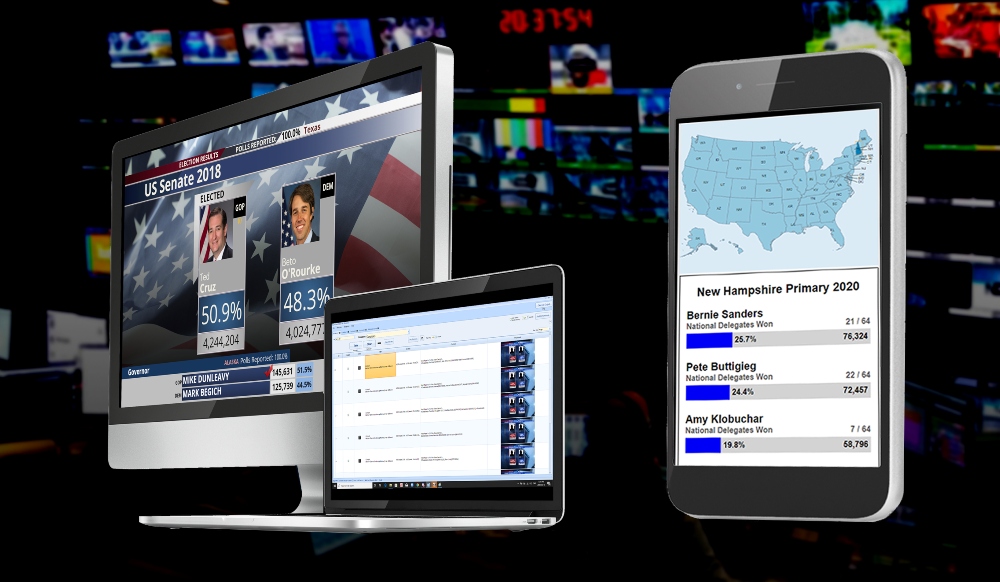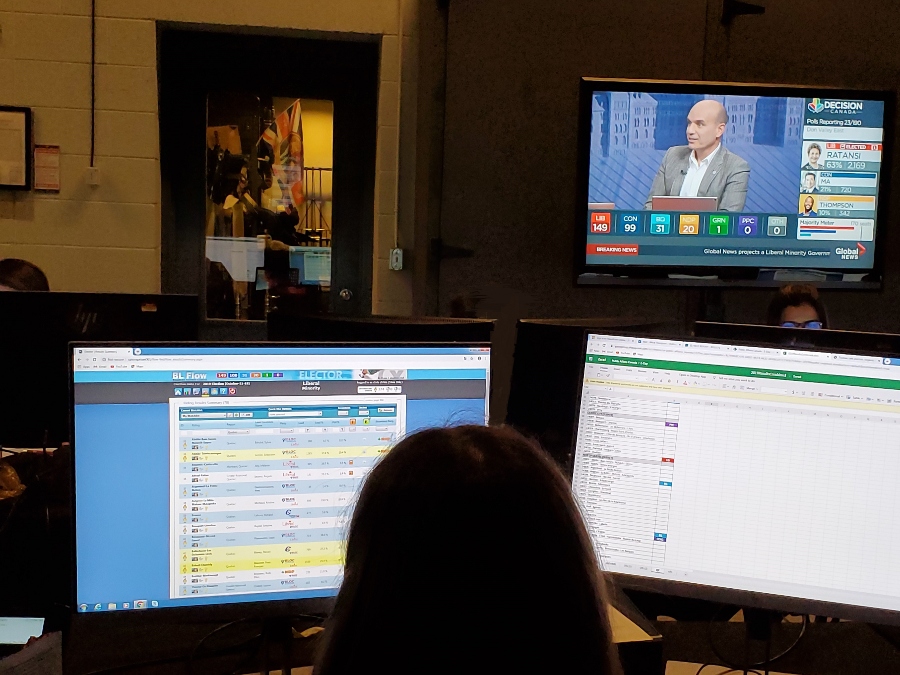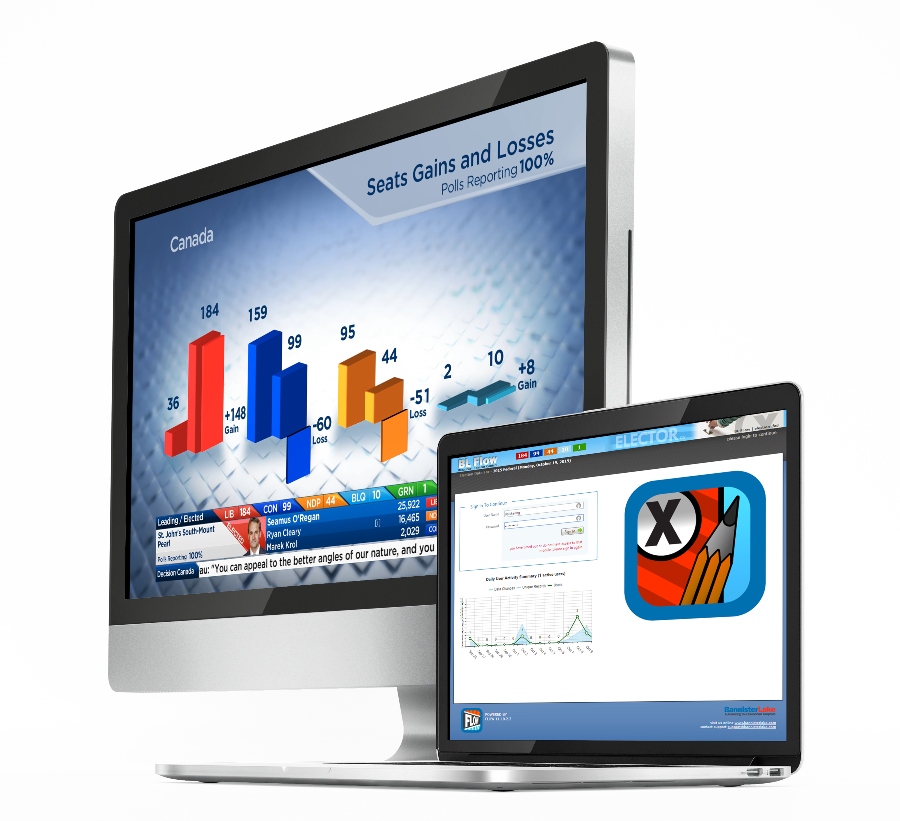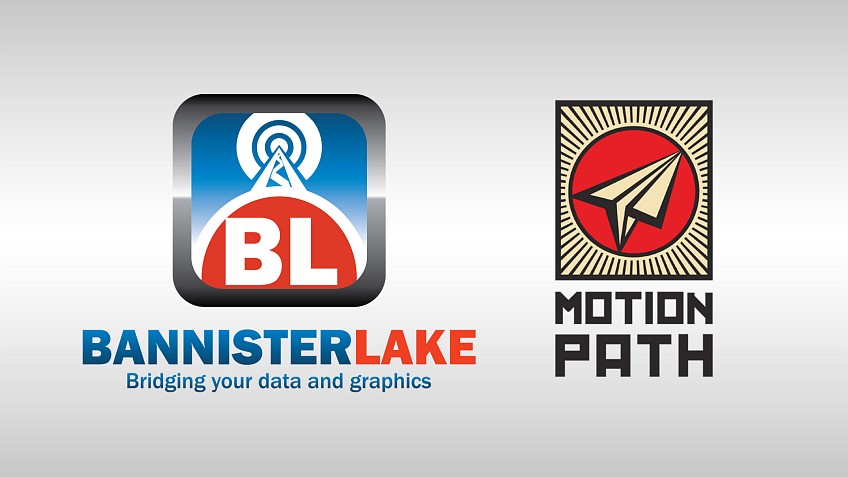At the 2020 NAB Show, Canadian real-time data solutions provider Bannister Lake will be focusing on its industry-leading data aggregation and management solution Chameleon and how the product adds value to a wide variety of broadcast, OTT, and digital signage applications.
Bannister Lake will be highlighting Chameleon’s enhanced election module ready for the 2020 U.S. election cycle. Media companies can take advantage of Chameleon’s new election features to produce real-time election coverage on any screen. Chameleon reads election results from both the Associated Press and Decision Desk HQ, allowing media to report on up ballot and down ballot races as well as the primaries and caucuses.
Bannister Lake will also be highlighting Chameleon’s ability to fully manage and visualize both live data feeds and on-air branding content for enhancing news productions, sponsorships, and promotions. Broadcasters in any market, using any output device, can integrate, moderate, and customize multiple live data feeds into graphic templates and provide their audiences with real-time news, weather, sports, social media, financial, and fully customized data. In addition, the product’s branding module can fully control sponsor’s snipes, bugs, and other promotional graphic content triggered by the broadcaster’s traffic system.
Automated infochannels will also be in the spotlight at the 2020 NAB Show. Chameleon serves as the foundation to ingest, manage, and visualize an unlimited number of data feeds that can be rendered to any graphics engine, HTML 5, or NDI. Broadcasters can quickly launch infochannels made up of real-time news, weather, sports, financial, event calendars, and other relevant content. To enhance the offering, Bannister Lake has recently added transit and car sharing data to make the channels especially important to local audiences.
As legal sports wagering continues to grow across the U.S., Bannister Lake will be featuring wagering channels covering horse racing, fantasy sports, and other events. Chameleon has become an essential tool to aggregate, manage, and display both sports statistics and betting data. Bannister Lake works with media companies that require a robust solution that can read data from a wide variety of sources and can integrate that data into the on-air presentation.
The 2020 NAB Show will also spotlight in-venue, real-time data solutions for arenas and stadiums. More and more venues are realizing that real-time data plays an integral role in delivering content that adds a deeper and more entertaining fan experience. Venues appreciate that advertising- and sponsor-related content has more impact if real-time, game-relevant, insightful data could be tied to the presentation. Chameleon is used to ingest real-time statistical data from the leagues, allowing fans to view carefully parsed live game and league statistics combined with game action. Venues are also turning to Chameleon to develop innovative use cases for real-time data and sponsorships, including graphically visualizing wait times at exit gates and concessions, charity lotteries, and corporate communications solutions.
Be sure to visit Bannister Lake at the 2020 NAB Show, Booth SL4711.









